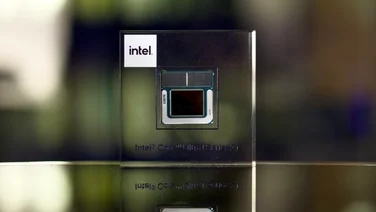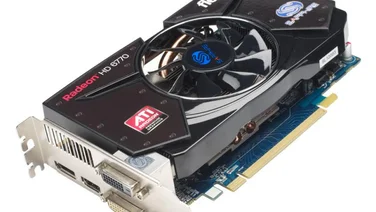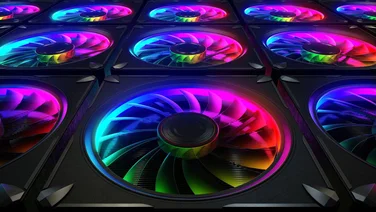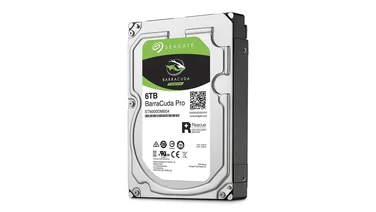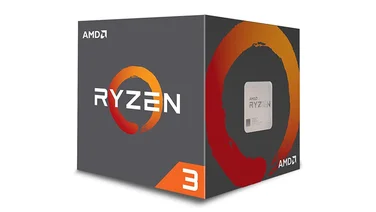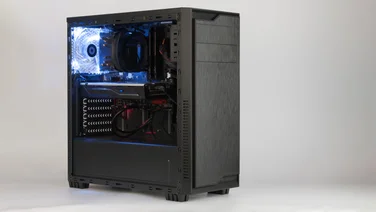To help us provide you with free impartial advice, we may earn a commission if you buy through links on our site. Learn more


We first reviewed the A8-7600 in a PC supplied by AMD for the purpose. Sadly, that PC didn’t allow the A8-7600 to run at its optimum performance, so we re-tested the processor in our own test rig where it performed much better. We’ve re-written the A8-7600 review to take account of the A8-7600’s improved performance.
AMD’s new Kaveri processors are designed to allow software developers to make the most of the processors’ computing power. Not only do all three announced Kaveri processors have four processor cores, they also have at least six graphics cores.
Even better, the processors’ graphics cores and central processing unit (CPU) cores have equal access to system memory and equal flexibility to create and execute work. This means developers can potentially use all the computing cores of a Kaveri processor to make full use of the chip’s processing power. The promise is faster desktop processing and better performance in games, but how do the Kaveri chips perform right now in our real-world benchmarks?

The A8-7600 has four processor cores, six graphics cores and an real-time audio-processing DSP on-die
The AMD A8-7600, which is the entry-level processor in AMD’s new Kaveri line-up, is a four-core processor with six graphics cores. It runs at a typical clock speed of 3.3GHz but can boost to 3.8GHz. To use the A8-7600 you’ll need to use an FM2+ motherboard, which means you can’t just use an existing FM2 board and swap out your Richland or Trinity processor for a Kaveri chip. The good news is that you can use a Trinity or Richland processor in an FM2+ motherboard, so if you don’t have funds for both a motherboard and CPU upgrade right now you can always upgrade your motherboard first and then your processor later.
The A8-7600 scored 71 overall in our multimedia benchmarks, the same as the A10-6800K and 11 points higher than the Intel Core i3-3220, so you’ll have no problems running desktop applications.
As with other AMD A-series processors, the A8-7600 performs well when graphics processing thanks to its built-in 720MHz, six-core graphics processor. The A8-7600 produced an average frame rate of 45.8fps in Dirt Showdown at a resolution of 1,280×720 and graphics quality set to High. We conducted this test with our reference RAM running at 1,600MHz. When we used AMD’s Gamer Series memory running at 2,133MHz the average frame rate increased to 51.2fps with a minimum frame rate of 40.8fps. If you want to use the A8-7600’s on-die graphics processor for playing 3D games then it’s certainly beneficial to use a higher-frequency memory kit.
Given the built-in graphics processor’s good 720p performance we increased Dirt Showdown’s resolution to 1,920×1,080 and re-ran the benchmark. With our reference memory installed and running at 1,600MHz the A8-7600 produced an impressive and playably smooth average frame rate of 33.5fps.
However, more graphically challenging games such as Crysis 3 will prove too much for the A8-7600’s graphics processor. At a resolution of 1,280×720 with graphics quality set to low the processor produced an average frame rate of 20fps, with a peak frame rate of 25fps and a low of 13fps when tested with our reference memory. When we used the AMD memory at 2,133MHz the average frame rate increased slightly to 23.9fps with a peak of 30fps and a low of 19fps.
There’s no doubt that the A8-7600 is good at graphics processing, but its benchmark results only match those we’d expect to see from the A10-6800K. As an example, the A10-6800K produced an average frame rate of 49.9fps in Dirt Showdown at a resolution of 1,280×720 with graphics quality set to High and with our reference memory running at 1,600MHz. This is higher than the average frame rate produced by the A8-7600. The A10-6800K also produced the same 20fps average frame rate as the A8-7600 in Crysis at a resolution of 1,280×720 with graphics quality set to Low. From what AMD have told us we’d expect the A8-7600 to perform better than the A10-6800K, and perhaps the performance will improve as the drivers are further developed.One exciting new feature of the new Kaveri processors is Dual Graphics, which lets your games make use of the processor’s graphics processor and the DDR3 version of an AMD Radeon R7 graphics card at the same time. Sadly this feature has not yet been enabled so we were unable to test it, but it sounds like a cheap and efficient means of squeezing every last drop of graphics performance out of your setup. Dual Graphics could be ideal for those who want to create a small form factor or budget gaming PC and we look forward to testing it.
Another novel feature of the A8-7600 is AMD’s True Audio technology. This takes the form of a programmable on-die digital signal processor that allows audio engineers to develop realistic and multi-directional sound that’s processed in real-time in tandem with graphics and output over HDMI. We have yet to experience a game or program that makes use of TrueAudio, so we’re unable to comment on its performance.

It’s also worth noting that you can configure the A8-7600’s thermal design power (TDP) in a PC’s BIOS. Our Asus A88X-Pro let us configure the TDP of the A8-7600 anywhere between the processor’s minimum of 45W to its maximum of 65W. When set to the minimum 45W TDP the A8-7600 scored 60 overall in our multimedia benchmarks, which is still a decent performance.
Software developers have yet to harness the power of the new Kaveri processors, but there’s no doubt that the new architecture is exciting and we hope it gets the developer support it deserves. The A8-7600 performed as well as an A10-6800K, which means it’ll handle any desktop application you care to throw at it. We don’t know the price of the A8-7600 at the present time as it isn’t available to buy yet, so it’s difficult to rate the processor. However, we think it’ll be around £100, which is around the same price as an A10-6800K and is reasonable given the A8-7600’s performance. If you’re planning to upgrade your PC during the first half of 2014 it’s worth bearing the A8-7600 in mind.
| Basic Specifications | |
|---|---|
| Rating | **** |
| Processor clock speed | 3.3GHz |
| Processor socket | FM2+ |
| Processor process | 28nm |
| Processor number of cores | 4 |
| Processor supported instructions | MMX, SSE 1, 2, 3, 3S, 4.1, 4.2, 4A, X86-64, AMD-V, AES, AVX, XOP, FMA3, FMA4 |
| Processor multiplier | x33 |
| Processor external bus | 100MHz |
| Level 1 cache | 192KB |
| Level 2 cache | 4,096KB |
| Supported memory type | DDR3 |
| Processor power rating (TDP) | 65W |
| Supplier | http://www.scan.co.uk |
| Details | www.amd.com |

